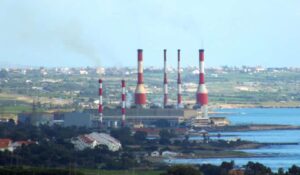U.S. Energy Policy Shift Freezes Clean Energy Funding – Hydrogen Fuel News

Recent shifts in U.S. energy policy have resulted in significant changes to the allocation of federal funds for clean energy initiatives. Key policy directives have put a temporary halt on disbursements from the Inflation Reduction Act (IRA) and the Infrastructure Investment and Jobs Act (IIJA). These changes pose challenges for ongoing clean energy projects and innovations, potentially altering the trajectory of renewable energy investments and technology development.
Halted Federal Support for Clean Energy Implementation
The recent executive orders mandate a review of unspent funds from the IRA and IIJA. Agencies across the federal government have been instructed to pause, and in some cases, reevaluate grant disbursements for initiatives such as electric vehicle (EV) charging infrastructure and renewable energy projects. Funds already awarded are reported to remain untouched, but no additional resources will be allocated until the review is complete.
This funding freeze has interrupted efforts to expand green energy infrastructure and slowed progress toward achieving emission reduction targets set in recent years. Programs supporting technology advancements in solar, wind, and hydrogen energy may now face delays, potentially threatening the ambitious goals to significantly cut national greenhouse gas emissions over the coming decades.
Plug Power Secures $1.66 Billion in Federal Loan Guarantees—Can It Be Taken Back?
One of the standout recent developments in clean energy funding was Plug Power securing a $1.66 billion loan guarantee from the U.S. Department of Energy (DOE) to support its efforts in producing and liquefying clean hydrogen fuel. Plug Power’s loan was confirmed earlier this month, making it one of the largest investments in clean hydrogen under the U.S. Inflation Reduction Act (IRA). The funds aim to finance up to six hydrogen production sites that could significantly reduce carbon emissions while advancing green hydrogen technology in the nation.
However, with the freezing disbursements of unspent IRA funding, many are questioning what this means for projects like Plug Power’s. The good news for Plug Power, at least for now, is that its funding appears secure. Experts suggest that rescinding already allocated and finalized federal loans would be both legally complex and politically risky, especially for projects deemed integral to U.S. energy innovation. Nevertheless, the company’s ability to access further federal funding could be seriously restricted under the new policies, potentially creating hurdles for long-term expansion.
Recent Updates from Plug Power Highlight Growth and Risks
Against this backdrop of shifting energy policy, Plug Power has been focusing on scaling its hydrogen infrastructure. Beyond the DOE-backed projects, the company recently announced plans to expand its footprint in the European hydrogen market and further develop partnerships with logistics providers and industrial clients in the U.S.
While these advancements showcase Plug Power’s efforts to lead the emerging hydrogen economy, they also highlight the risks involved in an industry highly dependent on federal support. Without the financial backing and commitment from policies like the IRA, private sector growth could stall, potentially setting the U.S. behind global competitors like Europe and Japan in clean hydrogen innovation.
Why This Matters and What’s at Stake
The freeze on clean energy funding and the rollback of federal incentives for EVs, offshore wind projects, and solar energy comes at a crucial time for climate action. According to the Environmental Protection Agency (EPA), as much as 93% of IRA funds had already been awarded, with the DOE allocating billions to green projects. However, achieving long-term emission reduction goals, such as those set by the Biden administration to slash greenhouse gas emissions by 60% by 2035, will require consistent legislative and financial support.
The uncertainty created by these policy changes could have ripple effects across industries. Clean hydrogen, for instance, is considered one of the most flexible solutions for addressing climate change. It has applications in sectors that are hard to electrify, like long-haul transportation and heavy industries, and can supply backup power in regions where the grid is unreliable. Without stable funding and supportive policies, the deployment of this technology may slow significantly.
Moving Forward with Energy Innovation
While the future of federal support for clean energy remains uncertain under the new administration, there are steps the public and private sectors can take to continue advancing energy technology. Companies can explore regional or state-level funding opportunities; states like California and New York remain committed to clean energy goals. Collaboration with international partners may also fill funding gaps left by federal cuts.
For individuals and businesses, adopting energy-efficient practices now can make a difference too. Investing in solar panels, electric vehicles, and energy storage solutions can reduce dependence on traditional fossil fuels while supporting the transition to cleaner alternatives. Although federal incentives may be scaled back, some initiatives and tax credits implemented under prior policies remain in effect.
The timeline for large-scale integration of new energy technologies depends on leadership consistency, market dynamics, and consumer demand. While projects like Plug Power’s hydrogen initiatives offer a glimpse into what’s possible, making progress in the face of policy turbulence will require resilience and innovation from companies, communities, and consumers alike.








